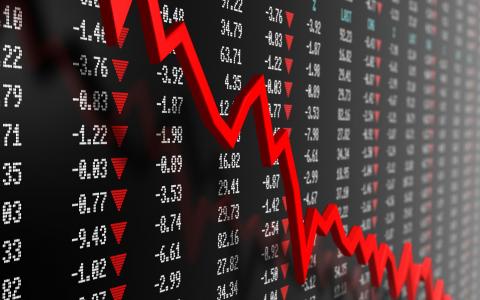
(Reuters) The market’s rebound comes as the economy and public health continue to feel the devastating effects of the pandemic. The resulting disconnect between Wall Street and Main Street has investors trying to understand market behavior.
Wall Street research has long been a staple input in investment theses for all stripes of investors, but some say they are relying less on it now.
Rob Christian, co-head of research and investment management at Franklin Templeton’s hedge fund solutions group K2 Advisors, said while he pays attention to sell-side research, his group is putting “less weight on it as there are so many unknowns.”
“In general, they missed it as a group,” Christian said, referring to the pandemic. “We think it is really hard to predict anything now.”
Some of the strategists’ predictions have proved to be correct. JPMorgan’s chief U.S. equity strategist Dubravko Lakos-Bujas, for example, did not cut his initial year-end S&P 500 target of 3,400 during the crash, arguing that the selloff was temporary and policy response would outlast the impact of COVID-19. The target was raised to 3,600 on September 11.
But he also argued in a Feb. 27 research note that the pandemic would have “one-time earnings hits for companies.” Between then and Sept. 11, he reduced his 2020 S&P 500 earnings per share estimate to $136 from $174.
Lakos-Bujas did not respond to requests for comment.
NOT BULLISH ENOUGH
Morgan Stanley chief U.S. equity strategist Michael Wilson and his colleagues cut their year-end S&P 500 forecast the day the market hit its low on March 23. “The speed and intensity of this recession is worse than we expected,” they wrote at the time. But they also said they were “incrementally more bullish,” and by mid-April were raising their year-end S&P 500 target back up again.
It was not bullish enough, however. Early in September, Wilson wrote that investors were surprised by the “persistence and magnitude” of the rally over the past few months. “While we were early to call for a new bull market back in late March, we have to admit we did not expect the S&P 500 to make its way to 3,600 by Labor Day,” they wrote in a Sept. 8 note. “We doubt many others did either.”
At Goldman Sachs, strategists led by David Kostin cut their S&P 500 2020 earnings per share target three times in 30 days and price target twice during the market downdraft of late February and March. When the market started to rally, they held fire even as the S&P 500 surpassed their year-end target of 3,000, and finally raised it to 3,600 in August.
“The building blocks of that price have shifted dramatically during the past six months,” they wrote on Aug. 14.
Wilson and Kostin did not respond to requests for comment.
“A WILD GUESS”
Indeed, economic whiplash from the coronavirus and unprecedented government intervention have made the traditional predictive tools unreliable, analysts and investors said.
Earnings per share estimates, a key input in S&P 500 price forecasts, initially lagged the market and then diverged from it as the shutdowns hurt business, Refintiv data shows, stretching stock valuations in ways that some strategists found hard to reconcile.
Between Jan. 1 and Feb. 19, when the market first peaked last year, Wall Street’s consensus estimate for the S&P 500’s 2020 earnings per share was reduced by 0.9%, according to the data.
Over the next month, as the markets fell sharply, the estimate fell 4.3%. Analysts kept cutting estimates as the economy tanked but the market rallied, reducing it by nearly 23% between March 23 and Aug. 25. The estimates have started to increase slightly since then.
Citigroup strategists led by Tobias Levkovich raised their target on Aug. 24 to 3,300 from 2,900, and predicted that the index could hit 3,600 by mid-2021. But they expressed reservations: “We still think the market may be ahead of itself.”
Levkovich did not respond to requests for comment.
Some have decided to throw in the towel on trying to forecast the market.
Tony Dwyer, chief market strategist at financial services firm Canaccord Genuity Group, said it was impossible to arrive at a sensible number. Dwyer suspended his forecast in March, then reinstated it over the summer before withdrawing it on Aug. 31 as the S&P 500 kept rising beyond his target.
“It’s a wild guess,” said Dwyer.
Dwyer added that he believed the overall investment thesis he provides clients is more important “than a made-up target.”



